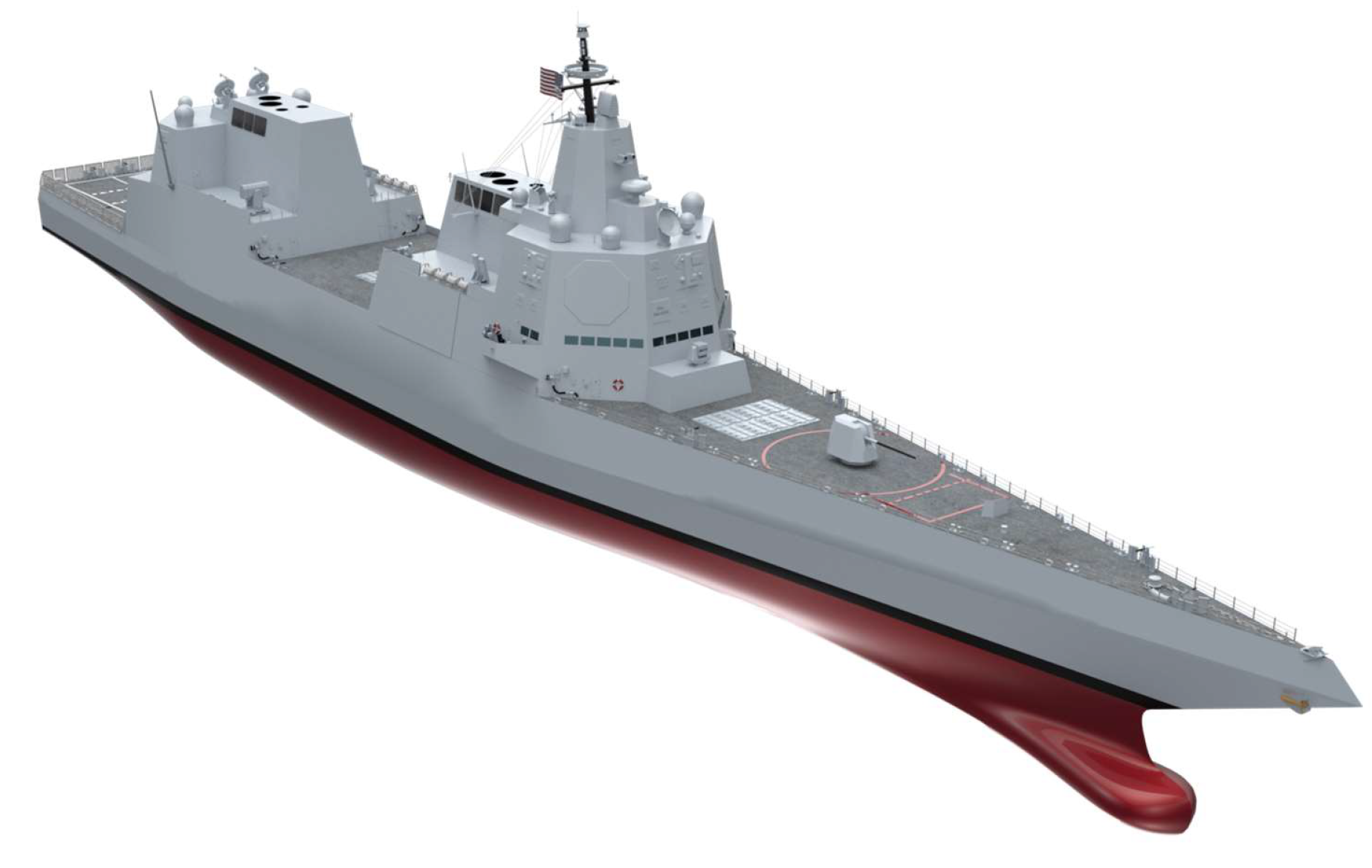
ARLINGTON, Va. – The Navy is looking for a three-year overlap between the start of construction on its next-generation guided-missile destroyer DDG(X) and its current crop of Flight III Arleigh Burke DDGs, the director of Navy surface warfare told USNI News on Wednesday.
Set to start construction in Fiscal Year 2032, the first DDG(X) will feature the combat systems, sensors and weapons of the current Flight IIIs fit inside a new hull with the space, weight power and cooling that can be expanded to include new weapon systems and sensors, Rear Adm. Fred Pyle said.
The Navy will build the new DDG(X) around the high-powered AN/SPY-6 air and missile defense radar developed for the Flight III, the current inventory of missiles for its vertical launch systems and service leaders have said it could be a platform for future hypersonic missiles.
“Just from a design standpoint, our shipbuilding programs are evolutionary vice revolutionary,” Pyle said.
“Where design and automation come in for DDG(X) is the hull form, what we’re doing in the propulsion plant, and those other enablers are the platform.”
At an estimated 13,500 tons with a cost of up to $3.4 billion, the DDG(X) is set to replace the legacy Burkes that have been in the fleet since the early 1990s.
The Navy will be the design agent for the new ship, working in conjunction with the two existing guided-missile destroyer yards – General Dynamics Bath Iron Works in Bath, Maine, and HII’s Ingalls Shipbuilding in Pascagoula, Miss.
The service is keen on feathering in the DDG(X) to create a smooth transition at the yards from the Flight IIIs.
“The answer is three years to make sure we do no harm to our shipbuilding industry, whether it’s Bath Iron Works or [Ingalls],” Pyle said.
While DDG(X) will have the weapons and sensors that are already on Flight IIIs, the propulsion system for the new destroyer is still not set, Pyle said.
Early discussions around DDG(X) indicated the new warship would have an integrated power system similar to the three Zumwalt-class destroyers in the Navy. The Zumwalt system of gas turbines drives a complex electrical grid that powers electric motors that drive the ship and has an excess margin for new sensors and weapons.
Last year, the service stood up a land-based propulsion test system in Philadelphia, Pa., to prove out the early propulsion train for DDG(X).
On Wednesday, Pyle said the Navy is still determining the make up of DDG(X)’s mechanical systems.
“We want a plant that’s efficient, and less dependent on the logistics for us. We’re looking at all options, as we look at propulsion,” Pyle said.





